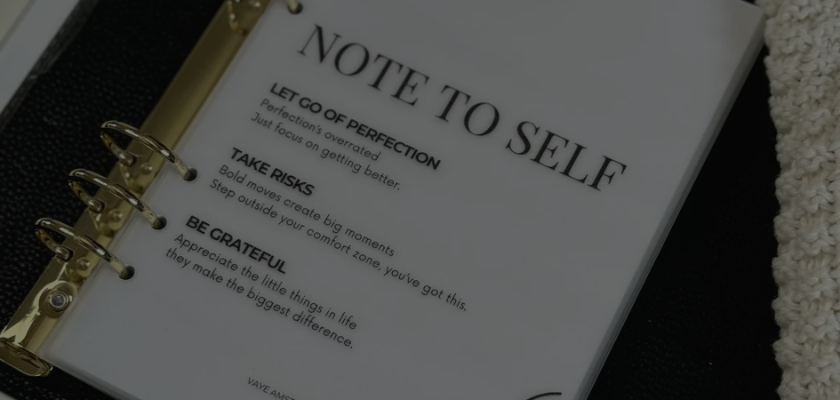
Mood Tracking for Beginners: How to Make It a Habit
Share
Have you ever had a day where you just didn't feel great, but had no idea why? Or a week where everything was going great and you just wanted to hold on to that feeling forever? Then a mood tracker might be just what you need. Don't worry, it's not complicated at all, and it can even become a fun, daily habit! In this blog post, you'll learn how to track your mood in a simple and creative way, without it feeling like an obligation.
Why use a mood tracker?
Okay, let's start with the basics. Why on earth would you want to track your mood every day? Well, it not only helps you discover patterns in your emotions, but also helps you see which factors influence your mood. Maybe you notice that you always have a slump on Monday mornings (who doesn't?) or that you're extra cheerful after a walk in nature. By tracking your mood, you can be more mindful of what energizes you and what doesn't.
A mood tracker can also help you with:
-
Reduce stress – You will gain insight into what your triggers are and how to better deal with emotions.
-
Improve mental health – By consciously paying attention to how you feel, you learn to deal with your emotions better.
-
Bring more positivity into your day – Sometimes we forget the small, beautiful moments. A mood tracker helps you appreciate them more consciously.
-
Better sleep – By tracking your mood, you can discover patterns that affect your sleep and improve it.
-
Make better decisions – See which habits and activities contribute to a positive or negative mood.
Choose a mood tracker that suits you
There are several ways to track your mood, and the most important thing is to choose a method that works best for you. Here are a few options:
-
Paper vs. Digital – Some people enjoy physically writing something down in a journal, while others prefer using an app. If you like bullet journals or planners, a physical mood tracker is ideal for you.
-
Simple vs. Creative – You can make a mood tracker as elaborate as you like. Some people simply use a color code (e.g., yellow for happy, blue for tired, red for stressed), while others add elaborate drawings or stickers.
-
Daily vs. Weekly – Short on time? You can choose to enter your mood once a week instead of every day.
-
With extra notes – Want to discover which events influence your mood? Then briefly jot down why you feel that way.
The most important thing is that you choose a system that works for you and stick with it!
How do you make mood tracking easy and fun?
Mood tracking should be something you enjoy, not something you feel obligated to do. Here are a few tips to keep it fun:
-
Connect it to an existing routine – For example, if you write in your planner for a few minutes every night, add your mood tracker to that.
-
Use visual cues – Use colors, stickers, or small symbols to quickly and easily express your mood.
-
Make it a game – Set goals for yourself, like completing your ballot for a month without missing a day.
-
Experiment with different styles – Try different layouts or methods to see what works best for you.
-
Reflect on your patterns – Look back once a month and try to discover what makes you happiest.
-
Combine with a gratitude journal – Don't just write down your mood, but also something you're grateful for that day.
-
Use a tracker with pre-filled structures – A ready-made mood tracker can help make it easier and more fun.
Prevent mistakes
Everyone makes mistakes when starting something new, and mood tracking is no exception. Here are a few pitfalls and how to avoid them:
-
Overcomplicating things – You really don't need to analyze every emotion of the day in detail. Keep it simple and manageable.
-
Forgetting to Track It – Set a reminder in your phone or put your mood tracker somewhere you'll see it daily.
-
Focus only on negative emotions – Use your tracker to celebrate positive moments too! Write down what made you happy that day.
-
Not sticking with it long enough – Give yourself at least 30 days to experience the effects of a mood tracker.
Get started today!
Ready to get started? The beauty of a mood tracker is that you can start anytime. You don't have to wait for a new month or a special occasion. Grab a planner or notebook, choose a system that works for you, and get started today.
Looking for a ready-made tracker you can use right away? Then a printed mood tracker is the perfect solution. All you have to do is enter your mood and you'll be on your way to mindful living in no time.
Conclusion
Mood tracking is an easy and fun way to get a better handle on your emotions. Whether you want to reduce stress, improve your mental health, or simply live a more mindful life, a mood tracker can really help. It doesn't have to be complicated—just choose a method that works for you, make it visually appealing, and above all, don't be too hard on yourself.
By consistently tracking your mood, you can recognize patterns and better manage your emotions. And the best part? You don't have to be perfect right away. Start small, experiment, and discover what works for you.
So, what are you waiting for? Get started today and discover what a mood tracker can do for you! 😊
